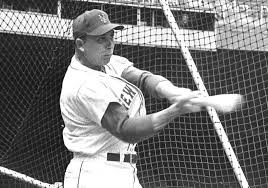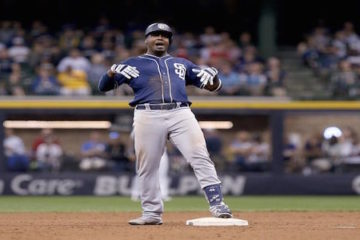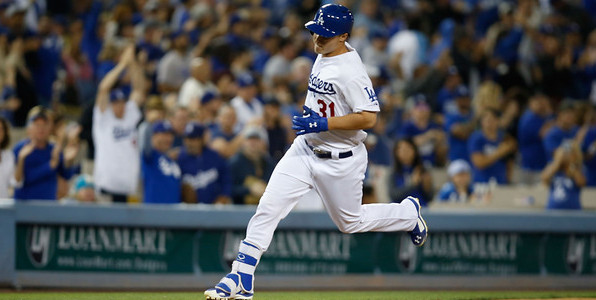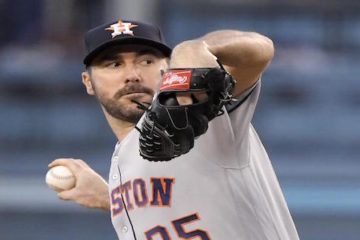2017 Fantasy Baseball: The Fielding Chronicles– Los Angeles Dodgers
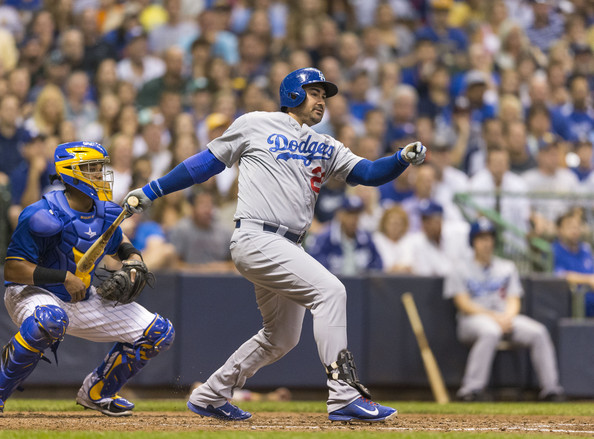
A funny thing happens to people that have been poor their whole life and suddenly become rich. Most of the time, they don’t suddenly become sophisticated. They make many of the same poor choices they made before they were rich. There are plenty of stories of lottery winners that wound up in worse shape than before they won the lottery. Such is the same with the baseball executive.
Andrew Friedman was one of the darlings of the new wave of sabermetrically minded geniuses. He managed to take a small market team in Tampa Bay and make them consistently competitive with innovative ideas and decision making. Drop a pile of cash on him in Los Angeles and suddenly he’s not that innovative anymore. Sure, he’s no fool, but he’s just not that different from anyone else. He doesn’t have to be. Sportrac has the Dodgers current payroll at 245 million in 2017. That’s 44 million more than the second place team and around 170 million more than his former Rays.
The Dodgers have the ability to spend themselves out of a number of holes, but has their spending helped their fielding and pitching? We will look at defensive runs saved (DRS) at billjamesonline.com to determine how good Friedman has done with this squad and also at defensive efficiency rating (DER) according to baseball-reference.com.
Team Overview
| Infield | Outfield | Shifts | Total | Rank | DER | Rank | |
| 2014 | +45 | -26 | +2 | +21 | 6th | .690 | 9th |
| 2015 | -10 | +9 | +12 | +11 | 8th | .692 | 6th |
| 2016 | +16 | +24 | +12 | +52 | 3rd | .699 | 4th |
Maybe Friedman isn’t so dumb. Well, no one ever said he was, but he doesn’t have to be as innovative in Los Angeles. However, both sets of numbers indicate that they have progressively gotten better since he has taken the reigns of the franchise. A part of grading an executive is looking at the big picture and the Dodgers have been a perennial playoff team since he got there.
Another part of grading an executive is looking at how much each win costs. The Dodgers have more payroll on the disabled list and not on the roster than some teams have in their everyday lineup. Still, the club has been working hard to develop their farm system and that farm system could be bailing them out right now.
Strongest Fielder
One of the benefits of having money is that you can absorb bad contracts and benefit from the production you do get. The Dodgers traded for Adrian Gonzalez and Carl Crawford several years ago. Crawford is long gone and virtually retired (although he still collects a hefty paycheck) but Gonzalez is still producing. Granted, he’s not worth the money he’s getting paid, but he still drives in runs and he has been plus 24 DRS in the past three seasons.
Gonzalez has up to one more year on his contract, so the Dodgers will eventually cycle out of the big money they are paying to both players. In the meantime, they get the fielding production he offers them. Crawford’s contract will run out after this season even though the Dodgers released him. They could have as much as 45 million extra to spend this offseason.
Weakest Fielder
Part of the genius of building a great team is in the subtle moves that few notice. Officially, Joc Pederson is the weakest fielder in the everyday lineup. He has been minus two DRS over the past three seasons. That’s hardly weak, but in this lineup he qualifies. This is after the club has made some changes at second base and left field in the offseason. Pederson has looked great at times, so he could still evolve into a plus defender. What a luxury it is when your worst defender is only mediocre.
Key Changes
Crawford was ostensibly supposed to be the left fielder when the Dodgers acquired him, but he mysteriously disintegrated as a player. That left the Dodgers scrambling a bit and they made the decision to fix left field from within. Andrew Toles is more along the lines of a Crawford in that his game is predicated on speed. He was plus five runs last season, so there is reason to hope he will be a positive impact defender this season as well.
Friedman dealt with his former employers to bring second baseman Logan Forsythe in to fill that hole. Forsythe is a very underrated performer and his fielding is but one aspect of that. He has been plus ten runs over the past three seasons in addition to offering 20 home run power as a middle infielder. The combination of the two could vault the Dodgers into the top spot defensively if both players can stay healthy.
Key Pitchers
A quick look at the Dodgers rotation shows where most of the money goes and why so much of it is on the disabled list. Currently, Rich Hill, Scott Kazmir, and Hyun-Jin Ryu are either on the disabled list or recently off of the list. The surprising sleeper has been Brandon McCarthy in the early going, but if you look at the batted ball statistics, it’s not all that surprising. He’s off to a 3-0 start with a 2.25 ERA despite not being drafted in most fantasy leagues. His only drawback has been his ability to stay healthy.
On the flip side, Japanese phenom Kenta Maeda is on the other end of the spectrum. In his rookie year, he had a ground ball rate at the league average. Relying on outfielders is probably the weakness overall for the Dodgers. While their outfielders are above average overall, the infield is probably the preferred route to go and that doesn’t even include the dreaded gopher ball.


